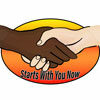How to Improve Public Speaking Skills
Public speaking is one of the most common and strongest fears in America among the fear of death and the fear of loneliness. It’s wild to think that it could be so strong as it doesn’t pose any life threatening danger but people often feel symptoms as if it was a dangerous activity. Today, I want to talk about simple steps to improving your public speaking little by little and hopefully change the way the activity is viewed as a whole.
You don’t need to be delivering a speech to an auditorium full of people

Public speaking is by no means limited to speaking in front of a large audience. Public speaking also consists of delivering a short message to your team, talking with a customer about an issue they might have, or even something as simple as a job interview.
According to Allison Shapira, the author of Speak With Impact, public speaking is a situation where you talk to an audience of 1 or more with a goal in mind. Allison Shapira is the founder and CEO of Global Public Speaking LLC and for the rest of this article we will be referencing her works to further understand a professional’s grasp of public speaking.
She says it is important to grasp this wider idea of public speaking because starting small is how you go big! Have a tough conversation with a peer, student, mentor, family member, whoever and that’s great public speaking practice right there. The first steps to being a great public speaker is being able to answer the following questions confidently. These questions solidify your intent and will make you more prepared to speak, in whatever context it is, big or small.
Where will you be speaking?
This context is actually more volatile than ever because of our current situation in 2020/2021. Where you are speaking can be anywhere from the comfort of your own home over a zoom call, to in front of a small crowd of people depending on your occupation and leadership status. We will go over both cases of in person and virtual speaking.
RELATED: Door To Door Jobs: Top 5 Benefits
Virtual Speaking

In the case of virtual speaking which is more likely, it is important to realize that the same body language you would use to convey ideas in person may not apply over a zoom or phone conference call. Try to refrain from too much physical movement if you can and focus more on your voice. Vocal intonation is a difficult thing to master but carries much better over phone than anything else would. You can change your vocal delivery in a few ways:
- Pace. Slowing down and speeding up your pace deliberately will help the audience keep track of what you are trying to say. If it is more important and worth writing down, make sure to slow down and enunciate clearly.
- Repetition. Repeating yourself is the easiest way to signal to your audience that what you are saying is important. Refrain from using this too much as it will become tedious and throw off the pace of the talk.
- Pauses. Pausing is another important tool that should be used sparingly but can change the overall tone of a speech. Use pauses of varying lengths to signify changing of topics or ideas like periods in writing.
In Person Speaking
When it comes to speaking and being physically in front of people it’s important to realize that everything said for virtual speaking still applies. Nonverbal delivery, the focus of speaking in person, has to be just as deliberate. Many go into presentations thinking they can just wing it and the nonverbal cues will come to them naturally. This is definitely true for some, but not all. There are three types of nonverbal communication that must be practiced in order to be mastered and they are as follows:

- Eye Contact. Eye contact is a way to build trust with an audience and shows you have nothing to hide. Making deliberate eye contact when stating your name, thanking people, and asking questions is a great way to keep the audience involved!
- Body Language. Pay attention to your walk, your posture, how you sit, etc. The way you present your body is the first impression any audience member will notice about you. Keep your shoulders back, your head up, and arms at your sides. Smiling is another great way to make that first impression that will change how people receive your message, whatever it might be.
- Hand Movement. This tip is a bit more advanced and hard to control as it is a natural human response. Many people when they speak will put their hands in the pockets or behind their backs which can create closed off body language. The best thing to do with your hands is to show your palms to the audience. Doing so shows you have nothing to hide and are confident with your gesticulation.
When will you be speaking?
The next question after where is when. Ask yourself, “when will this take place in my agenda?” When is a question that is not asked too often during preparations for public speaking but it helps to solidify your intention. If you have to give a presentation to a class or lead a webinar for clients, think about when it is taking place for you, your organization, and your audience.
With this deeper context, the importance of the talk becomes even more clear and can help to motivate you towards ideas you would not have thought of otherwise. For example, you could be the first speaker in a group of speakers and your performance becomes the tone setter. Whatever you do will have an effect on those after you and that adds extra significance to whatever you’re doing.
The same thing can be said for being a middle speaker or the final speaker. You control the flow of the overall message and you have to be aware of it. How can you use your “when” to further your message and the message of your organization?
Who else is speaking?

Another example is to picture who else is speaking. If you are interviewing with a company, there can be multiple rounds to said interview. Ask the interviewer who it is you’re speaking to and who else you might meet in the near future. Understanding the role sequence can play on your public speaking often changes the entire outcome and looks great to the audience when executed well.
Another thing to consider is that there might be contradicting messages. For example an assistant manager might say that one practice is okay to a new employee. If the manager comes along and sees the employee doing this practice that isn’t by the books and scolds them, who’s fault is it? Naturally it would be the assistant manager because they are a source of authority. If the authority isn’t unified, the whole team will be off center and everyone would be doing their own thing.
As a leader it is important to pay attention to everyone’s voices and make sure that the main purpose and goals are still in mind. As a team member, other’s voices are tools you can use to project your own and create a message bigger than just yourself.
In conclusion
For now, we will leave the topic here but I will definitely return to it in the future as there is a lot to say. One of the main mistakes beginners make when it comes to public speaking is not understanding the context of their actual message. In order to be successful you have to pay attention to the where, when, and who to make a message that actually speaks to somebody and they can relate with. Thanks for reading and check back soon for more public speaking tips!



I am so glad I ran into this article on improving public speaking. I have always had fears and issues with public speaking and need all the help I can get. the tips presented here will certainly help me as I practice! I thank you for sharing these great tips with me so I can conquer my fear
It’s all about practice and understanding that you can start small before going big! Thanks for the feedback
Hello, this is a very awesome piece and a very detailed one. I’m really happy I came across this as the information I’m getting from here is standard. I’m one very shy person when it comes to speaking in public. One time I got a job where I’m required to make public speeches most of the time and I had to drop it because of this phobia I have for speaking in public. I’ll go over this article again and again to learn the proper act of speaking in public. Thanks a lot
Thanks for the feedback! Public speaking is definitely not something you can just jump into. It requires practice and understanding of what it truly is before it can be done effectively. Sorry you had to drop that job but I’m sure many other opportunities presented themselves to you
Okay, now this is a very important topic you gave treated on this article. This is so for me because I have issues with speaking in the public. The only way I manage to do so is if I look away from the audience, which is not good for a speaker. This issue has made me shy away from many responsibilities that would have been of great benefit to me. Thanks for coming to my rescue with this article. I will go and practice with this skills and see how well my public speaking skills will become.
When it comes to looking away from the audience, the best trick is to focus on a point IN the audience that isn’t a person. It actually works very well because people will think you’re looking at them but really, you’re not. Win-win!
This is a very helpful guide you have here. Getting to read on how public speaking skills can be improved is something I think will be of great benefit for all. Actually, I do not partake in public speaking that much. But it would still be nice to develop my public speaking skills. Thanks for this.
Even if you don’t practice “public speaking” per se, these skills apply to all forms of communication including hard talks with family members. Keep that in mind!
This has been the most insightful article that I have read this week. I have not been able to find something so detailed on public speaking from any other source on the internet the way that I found it with this one. I really had to come down here to the comment section to thank you for providing this information and for free too!
Much thanks for the feedback! There’s more to come like this so keep your eyes open!